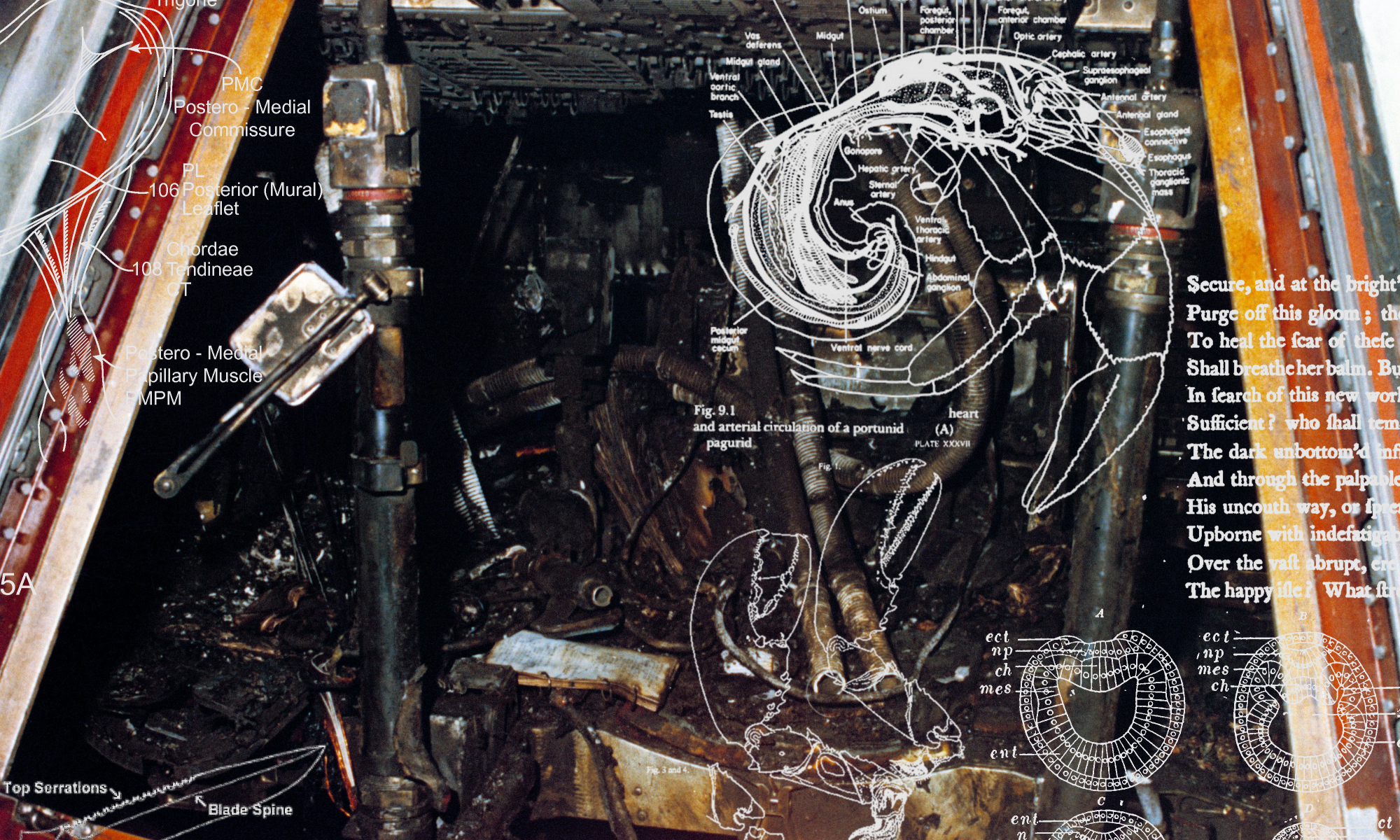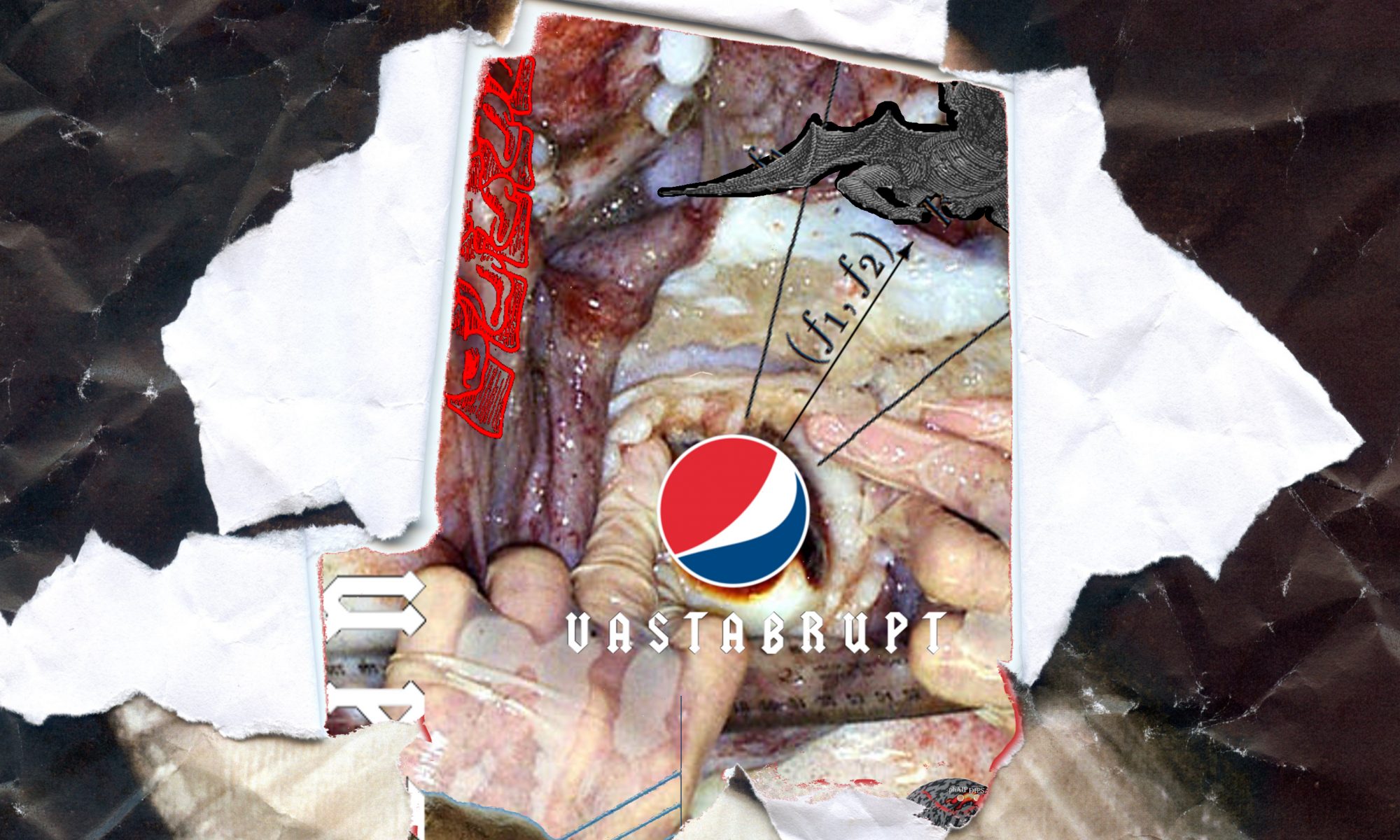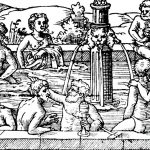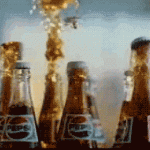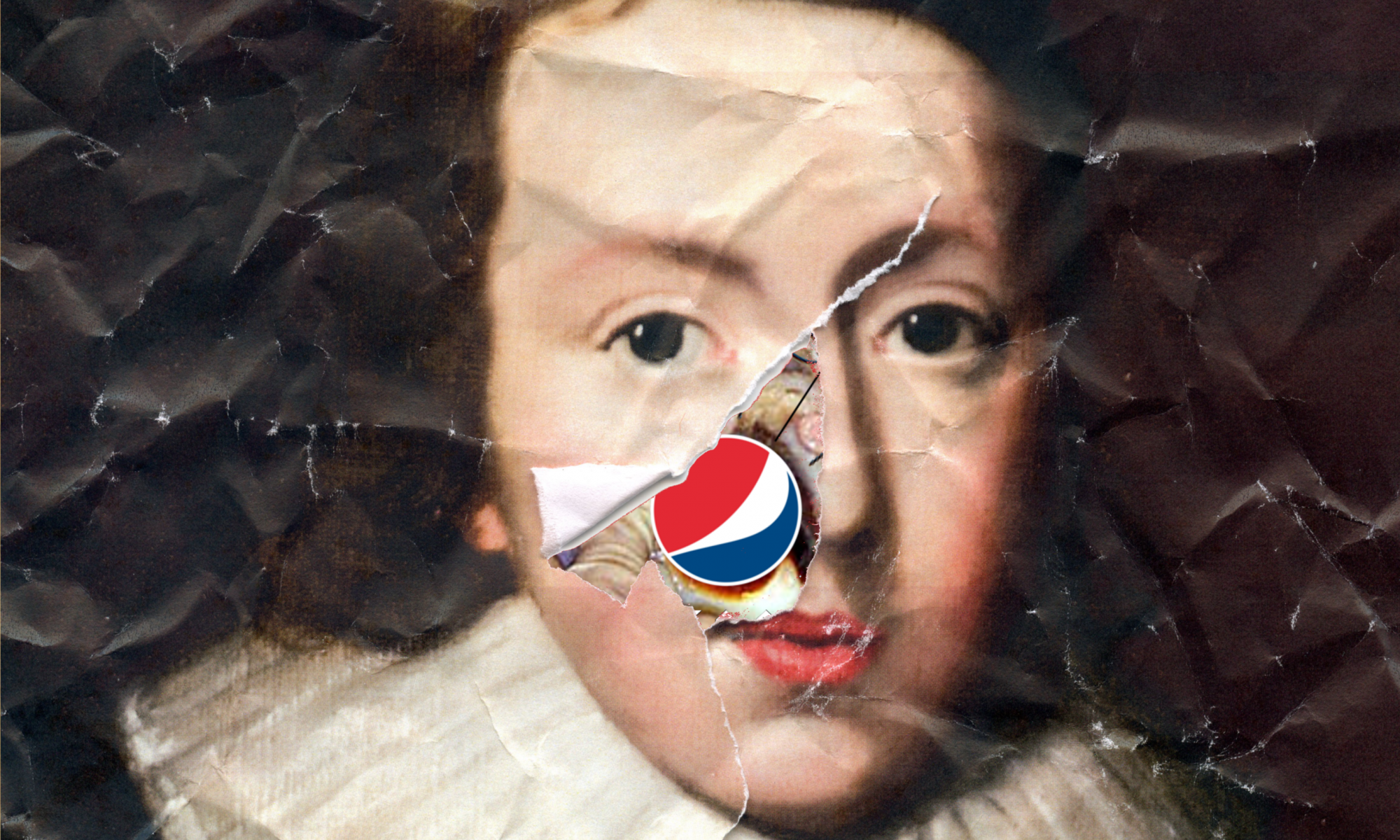Yesterday: ‘Peristaltic Metaphysics and the Invention of Pepsi’
DAY 4. Alchemy to Chemistry: or, the Occult History of Carbonated Beverages and the Secret Origins of Pepsi Cola
Pepsi Cola was not the first fizzy drink. Neither was it the first fizzy drink to be packaged as a digestive aid. In terms of deep historical lineage, fizzy drinks emerged directly out of the alchemical and iatrochemical tradition and its obsession with the secrets of gastroenterology. Put differently, Pepsi’s occult genetic history — the story of its emergence into the world — connects straight back to the lab of van Helmont and the speculations of Paracelsus: Pepsi’s genesis is thus inextricably tangled up with the ideas that percolate through Paradise Lost’s alchemical metaphysics.
In 1767, Joseph Priestley — dissenting theologian, radical chemist and political utopian — moved into a new house in Leeds. It was next to a brewery. Chemists at the time were fervently experimenting with gases, leading, eventually, to Lavoisier’s dismissal of the phlogiston theory of combustion; the discovery of oxygen (in part also attributed to Priestley); and the postulation of chemical elements, igniting, in other words, the birth of modern chemistry. Of particular research interest at the time was a curious colourless and odourless gas that was referred to as ‘fixed air’ or ‘factitious air’. Chemists had long been interested in its strange properties: for example, if you held a flame in it, it would be extinguished, and it was known to suffocate animals. Importantly, it also notoriously collected in wineries and breweries. Taking advantage of his surroundings, the freshly-settled Priestley set to work, requesting his new neighbours’ permission to begin experiments on their premises. Heavier than air, this gas (which we now call ‘carbon dioxide’ after Lavoisier’s later identification of it) would build up above the fermentation vats (indeed, it had long proved a lethal danger as it was prone to pool in silos and cellars, asphyxiating unwitting workers). Priestley, accordingly, began attempts to extract this so-called ‘fixed air’ from above the brewery’s beer vats. Following one experiment — in which he poured water from one container to another just above the fermenting vats — the chemist noticed that the liquid had suddenly become effervescent or, as he put it, “impregnated with air”.[note]Joseph Priestley, Impregnating Water with Fixed Air; In order to communicate to it the peculiar Spirit and Virtues of Pyrmont water, and other Mineral Waters of Similar Nature (1772).[/note] Priestley, in other words, had just made the world’s first artificial fizzy drink. Soda could now be unleashed upon the world. Always a utopian, Priestley later said this was his “happiest” invention.[note]Just as they were misidentified — upon arrival — as agents of eupepsia (rather than the dyspepsia-generators they really are), soft drinks were routinely mistaken for utopian items. Before its eventual unveiling as an agent of capital’s superstimuli invasion and means-ends reversal, fizziness became symbolic of utopia. The eccentric François Marie Charles Fourier was famous, of course, for imagining that an environmentally re-engineered earth would soon begin exhibiting oceans of lemonade. One imagines the fully-capitalised earth exhibiting the opposite: surging with obsidian seas of necrotizing cola.[/note] Little did he know…
Without hesitation, Priestley immediately billed his discovery as a cure for digestive issues. (This would become part of a tradition surrounding carbonated liquids extending from Priestley forwards to Bradham and backwards to Paracelsus.) He became convinced that his new artificially-manufactured carbonated water would help to prevent scurvy — the horrendous affliction that had murdered around two million sailors between 1500 and 1800.[note]Simon Shorvon & Humphrey Hodgson, Physicians and the War (Hachette, 2016), 37.[/note] Importantly, scurvy (just before James Lind’s research demonstrated it to be caused by a deficit of vitamins, curable with citrus) was considered a digestive illness. It was thought that the disease was occasioned by the dyspeptic “putrefaction” of the sufferer’s visceral organs, arising from indigested foodstuffs rotting inside their intestines. Under the impression that the fizzy water would help alleviate this (and sensing government commendation), Priestley proposed soda drinks as a cure to scurvy in a 1772 paper addressed to the British Admiralty, entitled Impregnating Water with Fixed Air; In order to communicate to it the peculiar Spirit and Virtues of Pyrmont water, and other Mineral Waters of Similar Nature.[note]Fizzy water took the name ‘Pyrmont water’ due to a famous naturally carbonated spring in Pyrmont, Germany. Earlier in the century, scientists had demonstrated that Pyrmont’s water was fizzy due to the ‘impregnation’ of ‘fixed air’ within it.[/note] Therein, Priestley provided an appendix detailing the treatment — via administration of ‘fixed air’ beverages — of a patient with a “putrescent state of the [internal] fluids”. “Fevers of the putrid kind” are cured by “fixed air”, it was confidently reported.[note]Joseph Priestley, Impregnating Water with Fixed Air; In order to communicate to it the peculiar Spirit and Virtues of Pyrmont water, and other Mineral Waters of Similar Nature (London, 1772), 18.[/note] In agreement with this conclusion, Nathaniel Hulme (1732-1807) — an influential naval surgeon — became likewise convinced that the cause of scurvy was bad diet and insisted that imbibing “fixed air” would “prevent the putrefaction of human tissue by disease”.[note]Indeed, prior to Priestley’s invention of reliably creating soda water, the production of beverages from carbonic acids had been common. So-called “Elixir of Vitriol” was a common treatment, which was presumed to engender “fixed air” effervescence in the stomach and banish the disease. Carbonated waters were introduced as a scorbutic cure as early as 1764. The practice of administering these highly acidic drinks would likely have done more to hinder than help, and unfortunately remained in place until 1795.[/note] Subsequently, a device for producing carbonated drinks was installed on board James Cook’s HMS Resolution, and, sure enough, none of his crew suffered from scorbutic blight. In hindsight, this had more to do with Cook’s meticulous captainship and good practice; the carbonated drinks, nevertheless, were considered a great success. It was not long until a German watchmaker called Johann Jacob Schweppe (1740-1821) set up the first mass production factory for carbonated drinks in Drury Lane, and, riding on the back of contemporary medicinal wisdom, he marketed his soft drink as a cure for biliousness. From the very beginning, then, carbonated drinks were related intimately to peptic issues: it was this tradition of entwining medicinal presumptions and entrepreneurial savvy — entrenched in the 18th century by Priestley, Hulme, Schweppe, etc. — that Caleb Bradham, inventor of Pepsi, was drawing on in the 1890s when he invented his exhilarating ‘cure’ for dyspepsia.
Returning to the late 1700s, however, we see that the benefits of fizz were so highly regarded that they even briefly became the subject of military intrigue. Following the nautical success of Priestley’s “impregnated water”, “[t]he Royal Society […] thought it was the start of a medical and travel revolution”[note]Tristan Donovan, Fizz: How Soda Shook up the World (Chicago, 2013), 8.[/note], and this was instantly perceived as “vital to the strategic interest of the Royal Navy since carbonated water [was thought to remain] fresh longer [and] was useful for treating upset stomachs”.[note]Arthur Greenberg, From Alchemy to Chemistry, (Wiley, 2006), 290.[/note] It was considered a naval breakthrough. Where it had previously been a concern that France — a country filled with naturally carbonated mineral water springs — may have the edge on the Navy in this department, the Brits had suddenly upended the asymmetry. Along with Lind’s breakthroughs in vitamin deficiency, it was not long until carbonated lime juice was a regular for the navy (hence, ‘Limeys’). As Greenberg writes, “Priestley thus helped Britannia to ‘rule the waves'”. Fascinatingly, this strategic “soda-pop gap” triggered an episode of international espionage wherein a Portugese monk[note]Named Joaoa Jacinto de Magelhaens.[/note], acting in French interests as a spy within the UK, purloined a copy of Priestley’s paper and sent it back to Lavoisier. (Like any good world-changing consumer item, Pepsi — along with the internet, jet engines, and microwaves — started life as a military invention.) From this view, Pepsi’s self-assembly feeds back into itself — in a veritable bootstrapping process — as the naval prowess bequeathed by carbonation technology facilitated the furthering of the sugar trade’s global network[note]Indeed, it was precisely around this time — during the later 18th century — that sugar exploded into a household commodity, possessing the taste-buds of Europeans: the New World islands took full advantage of this and the overseas trade boomed. In England and Wales, sugar consumption increased 2000% in the 1700s.[/note], thus dragging world history further towards convergence upon the point at which sugar-addiction and fizziness merge in the invention of cola.
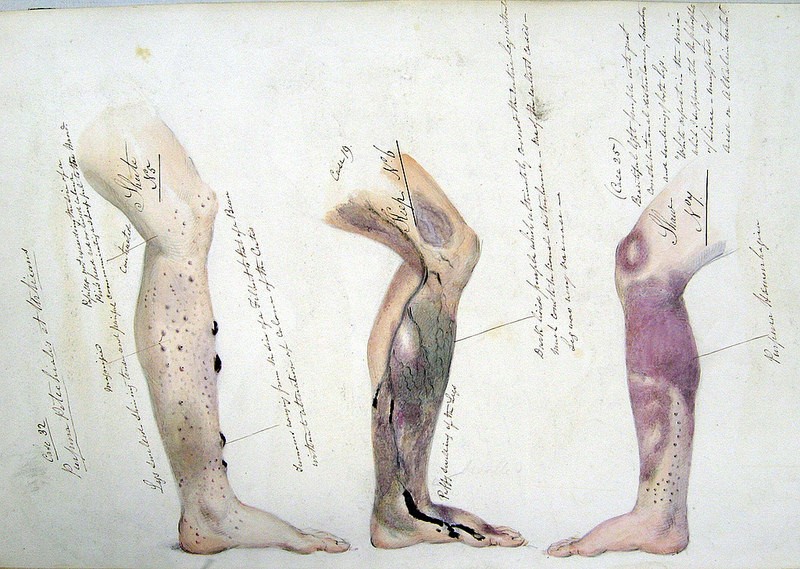
Nevertheless, for all his genius, Priestley could not have stumbled upon the production of carbonated water if he had not been previously aware of ‘fixed air’. He could not have made his aerated waters without a prior notion of gas. And gas is, itself, a direct invention of the alchemical-archeus tradition. ‘Gas’ was first identified by none other than Jan Baptist van Helmont in his own speculations upon digestion and the various nested archaei of the natural order. “He was the first to realise that gaseous substances other than air exist”, writes Almqvist.[note]Ebbe Almqvist, History of Industrial Gases (Plenum, 2003), 3.[/note] And the first gas van Helmont discovered — thus the first gas ever properly described by science — was, appropriately, carbon dioxide. Indeed, Paracelsus had himself made some headway in this department (suggesting that there was something in the air that sustained living organisms, and by experimenting with hydrogen)[note]Paracelsus saw that when iron is dissolved in sulfuric acid “air rises and breaks out like wind”. Unbeknownst to Paraclesus this was hydrogen.[/note], yet it was van Helmont who first discovered CO2 as a “gas” separate from air.[note] “In consequence of burning coal ‘spiritus sylverstris’ comes into being. This spiritus, which was formerly unknown and cannot be kept in vessels, and cannot be converted into a visible form, I call by the new name ‘gas’.” Helmont, Ortus Medicinae, (Amsterdam, 1656). Thus, the invention of Pepsi stretches back from Bradham to Priestley and from there to van Helmont: it was exactly van Helmont’s discovery of CO2 in the 17th century that allowed for Priestley, in the 18th century, to kick-start the formation of the global soda industry in the ensuing 19th and 20th centuries. It was also as a direct consequence of van Helmont’s experimentations with CO2 and carbonated waters that Robert Boyle later was able to formulate his important ‘Boyle’s law’.[/note] Moreover, it was exactly van Helmont’s fascination with gastric process that originally led him to this discovery in the first place. Spurred on by his theory of the archeus, in which all cosmic processes are essentially digestive processes, van Helmont experimented heavily with fermentation processes. This is what first led him to notice that what he called “gas sylvestre” (carbon dioxide) was a separate substance from air. From carefully observing fermentation (which he took to be the digestive work of the universal archeus), van Helmont founded the concept of ‘gas’, coining the word at the same time. Helmont noted, moreover, that “gas sylvestre” arose in both wine cellars and breweries and in naturally-carbonated spring waters.[note]There is a direct line of experiments from here to Priestley’s work. Following van Helmont, others in the early 18th century had developed the connection between ‘fixed air’ and effervescent mineral waters: early in the century, the artificial production of ‘fixed air’ was developed via applying acid to chalk; and in 1741, William Brownrigg demonstrated the famous Pyrmont waters were “aerated” because they contain precisely this “fixed air” gas; Brownrigg had heated a bottle of spa water and, collecting the CO2, suffocated mice with it. Around 1757, Joseph Black produced the first systematic investigation of CO2; in 1770, Torben Bergman started trying to document the composition of spring waters in detail. No-one, until Priestley, however, had managed to reliably create drinkable fizziness (although a Frenchman named Gabriel Venel had attempted to duplicate the Selters water, it had developed a foul taste in the process). Priestley produced an apparatus for producing this water; soon after, by 1781, carbonated water was able to be produced on a large scale.[/note] As Pagel writes, “gas [became] central to his naturalist philosophy and cosmosophy”.[note]Walter Pagel, Joan Baptista Van Helmont: Reformer of Science and Medicine (CUP, 2002), 61.[/note] Finally, van Helmont first demonstrated that CO2 was given off when acid was poured on carbonates: it is from here that ‘soda water’ gets its name, because cooking soda was a commonly used carbonate for this process.

Aside from providing the awareness of gases that allowed Priestley and others to produce soda water, the very idea that carbonated liquids are good for digestion can be traced directly back to the iatrochemists. Naturally, both van Helmont and his mentor Paracelsus were incredibly interested in carbonated mineral waters arising from spas and springs. Paracelsus, who was born the year after Columbus first voyaged to the American continent (bringing with him the sugarcane seedlings that would eventually blossom into the globally enveloping market turbulence of the Sugar Trade)[note]And thus installing the material conditions of worldwide Pepsi-production.[/note], is known as the “father of balneology” for his pioneering medical interest in carbonated spring waters (balneology, of course, being the study of medicinal spring bathing and the therapeutic effects of their waters).[note]H Schadewaldt, ‘Paracelsus and Balneology’, in Schweiz Rundsch Med Prax., 29:83 (1994), 371-6.[/note] Since antiquity, civilizations have been mesmerised by fizzy water bubbling out of the earth. Soda water has long been known as ‘Seltzer water’ because of the famous Selterswasser springs in Selters, Netherlands, which have been documented since 771 AD. Further back, since at least Hippocrates, fizzy spa water had been associated with eupepsia and good health. Hannibal famously refreshed himself with fizzing water from Vergeze on his way to sack Rome in 218 BC. Medieval alchemists prescribed effervesced spring waters to promote good digestion. Soon, after the 14th century, an international trade for bottled spa water arose. Accordingly, across Europe, natural springs and baths slowly became healing centres: including, for example, the famous Pyrmont mineral springs in Germany or the town of Spa in Belgium. Perrier Soda Water, indeed, is still bottled from a naturally occurring spring. Nevertheless, it was Paracelsus who is said to have initiated the concerted study of the properties of these fizzy springs.
In the summer of 1535 he travelled the spa town of Bad Pfafers, from which he wrote his influential Baderbuchlin (which we know John Dee read eagerly).[note]John Dee’s annotations on Paracelsus’s Baderbuchlin.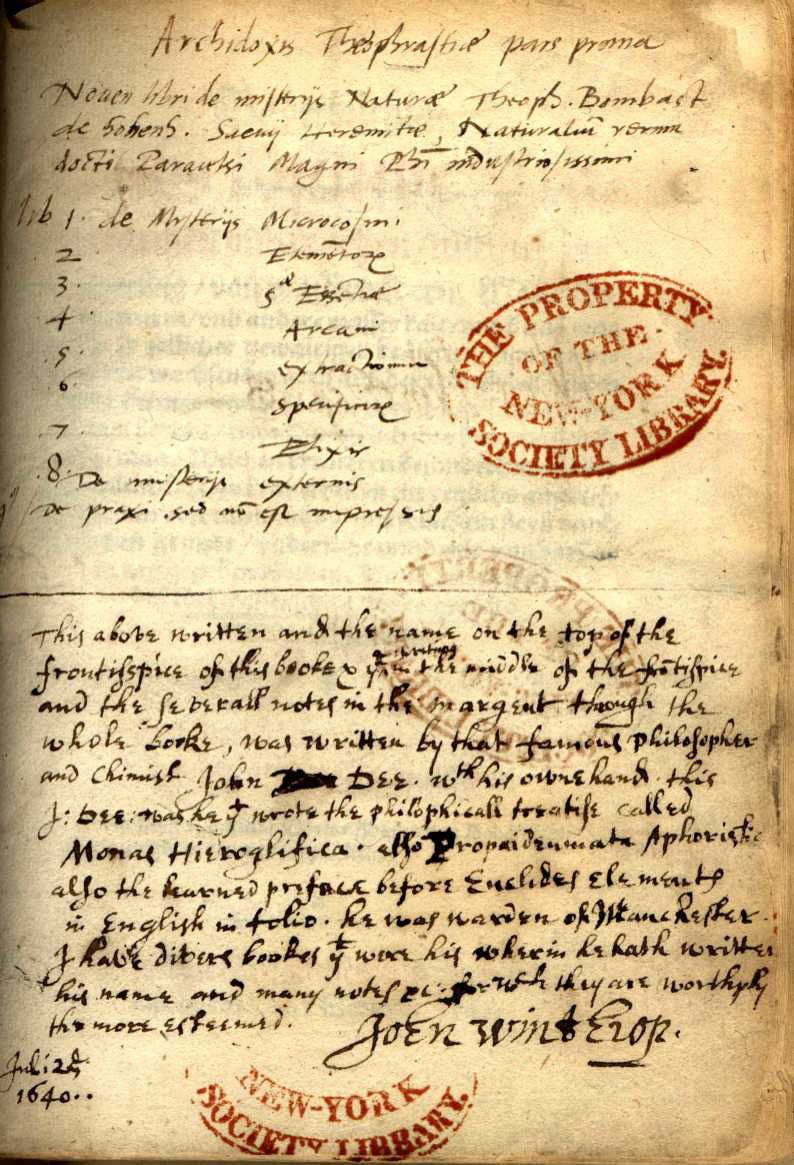 [/note] Always obsessed with digestion, Paracelsus was quick to focus discussion upon the supposedly eupeptic properties of the water. He praised carbonated spring water as “driv[ing] away gout, and mak[ing] the stomach as strong in digestion as that of a bird that digests tartar and iron”.[note]Walter Pagel, Paracelsus: An Introduction to Philosophical Medicine in the Era of the Renaissance (Karger, 1982), 26.[/note] Imagining the ‘occult’ powers of the earth’s chthonic healing laboratories — fizzing forth at the surface in this natural medicine — Paracelsus became enthused: he attempted to artificially recreate the fizziness, but met with no success. It was, as we have seen, only with his apprentice, van Helmont, that this effervescence first became the subject of reverse engineering, thus opening the pathway to the industrial and globalised production of soft drinks. Speculating even that the acidity of the spa waters held some occult connection with gastric acid, Paracelsus and van Helmont enthusiastically opined that carbonated waters were better than almost any other medicines. Bolstering an enduring fascination with the fizziness that seeps from the planet’s chthonic depths — stretching back to Hippocrates, and becoming more popular throughout the Middle Ages — the iatrochemical tradition helped to fully entrench the connection between fizz and eupepsia in the public consciousness.
[/note] Always obsessed with digestion, Paracelsus was quick to focus discussion upon the supposedly eupeptic properties of the water. He praised carbonated spring water as “driv[ing] away gout, and mak[ing] the stomach as strong in digestion as that of a bird that digests tartar and iron”.[note]Walter Pagel, Paracelsus: An Introduction to Philosophical Medicine in the Era of the Renaissance (Karger, 1982), 26.[/note] Imagining the ‘occult’ powers of the earth’s chthonic healing laboratories — fizzing forth at the surface in this natural medicine — Paracelsus became enthused: he attempted to artificially recreate the fizziness, but met with no success. It was, as we have seen, only with his apprentice, van Helmont, that this effervescence first became the subject of reverse engineering, thus opening the pathway to the industrial and globalised production of soft drinks. Speculating even that the acidity of the spa waters held some occult connection with gastric acid, Paracelsus and van Helmont enthusiastically opined that carbonated waters were better than almost any other medicines. Bolstering an enduring fascination with the fizziness that seeps from the planet’s chthonic depths — stretching back to Hippocrates, and becoming more popular throughout the Middle Ages — the iatrochemical tradition helped to fully entrench the connection between fizz and eupepsia in the public consciousness.
Tomorrow: ‘🅱🅰🆂🅸🅻🅸🆂🅺: Menstrual Chaotics and God’s Ectopic Pregnancy’
